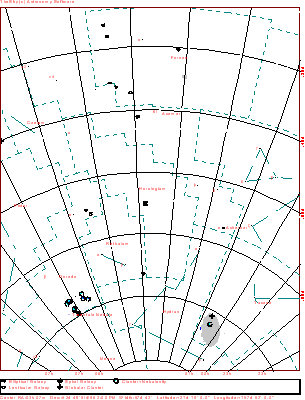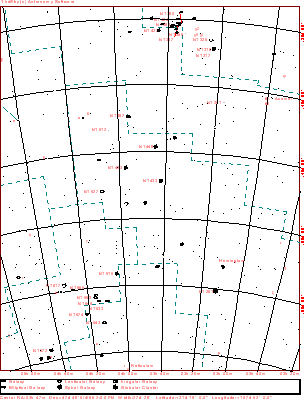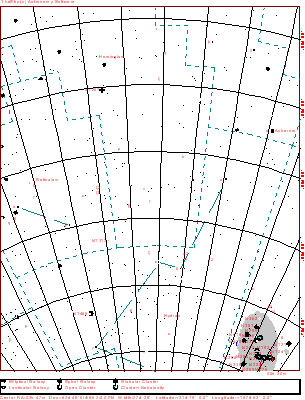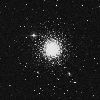
| Home | Deepsky Atlas | TheAstronews | Links | Solar System | ||||||

Hawaiian Astronomical SocietyConstellations: Horologium -- When Clocks became Useful |
||||||||||
A couple of final comments: The pendulum clock allowed much more accurate time keeping. A pendulum one meter long has a beat (one half swing) of almost exactly one second. Also, Huygens wrote one of the earliest discussions of extraterrestrial life called Cosmotheoros.

Click the map for a 916x1200 version of the above. Click here for a map better suited for use in the field.

This a more detailed view of the constellation. The map displays stars to magnitude 10, and deepsky objects to magnitude 12. Click here for a map better suited for use in the field.

Click here for a map better suited for use in the field.
 57k JPEG NGC1512 is a spiral galaxy located in northeastern Horologium, 2.1° WSW of Alpha Horologii. Dreyer describes it as having an extremely faint ring. The remainder is bright (mag. 11), quite large (8.9'x5.6'), round, with a brighter middle. The ring Dreyer describes is an active star forming region, and is visible only in larger amateur instruments. 57k JPEG NGC1512 is a spiral galaxy located in northeastern Horologium, 2.1° WSW of Alpha Horologii. Dreyer describes it as having an extremely faint ring. The remainder is bright (mag. 11), quite large (8.9'x5.6'), round, with a brighter middle. The ring Dreyer describes is an active star forming region, and is visible only in larger amateur instruments.
NGC1510 sits 5' to the south-west. Dreyer describes this small (1.3'x0.7'), faint (mag. 13.5) companion to NGC1512 as showing very gradually much brightening toward the middle. Image from the Digital Sky Survey.
|
 19k JPEG NGC1433 is a barred spiral galaxy located in east-central Horologium. It forms the right angle of a triangle consisting of itself, Alpha Horologii, and Alpha Doradus. Dreyer describes it as very bright (mag. 10.8), large (6.4'x5.8'), moderately extended to the west, with a very abruptly very much brighter middle. Indeed, the center looks like a 10th magnitude star. The star forming ring, so prominent in photographs, is not visible in amateur telescopes. Image from the Digital Sky Survey, and given additional processing. 19k JPEG NGC1433 is a barred spiral galaxy located in east-central Horologium. It forms the right angle of a triangle consisting of itself, Alpha Horologii, and Alpha Doradus. Dreyer describes it as very bright (mag. 10.8), large (6.4'x5.8'), moderately extended to the west, with a very abruptly very much brighter middle. Indeed, the center looks like a 10th magnitude star. The star forming ring, so prominent in photographs, is not visible in amateur telescopes. Image from the Digital Sky Survey, and given additional processing.
|
 47k JPEG NGC1261 (Bennett 11, Caldwell 87) is a globular cluster located in west-central Horologium, 4.5° east of the mag. 5.2 Zeta Horologii. Dreyer describes it as bright (mag. 8.4), large (6.9'), round, and very resolvable (in a 12" telescope). 47k JPEG NGC1261 (Bennett 11, Caldwell 87) is a globular cluster located in west-central Horologium, 4.5° east of the mag. 5.2 Zeta Horologii. Dreyer describes it as bright (mag. 8.4), large (6.9'), round, and very resolvable (in a 12" telescope).
|
If you have any questions about the Hawaiian Astronomical Society
please
(link requires javascript).